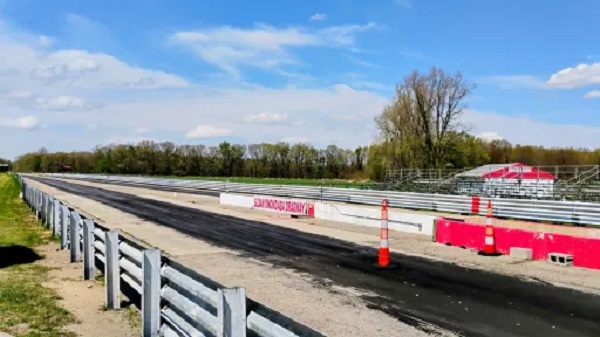Lansing, Mich. — A recent court ruling has brought an abrupt halt to operations at Sloan Onondaga Dragway, with Ingham County Circuit Court Judge Rosemarie E. Aquilina ordering the track to cease operations immediately. The decision, handed down Thursday, comes in response to a lawsuit filed by Onondaga Township resident Rebecca Lindsey, who claims the track’s noise and vibrations have become a persistent nuisance.
The legal battle over the dragway has been ongoing for years, with the facility repeatedly facing complaints from local residents. In this most recent case, Lindsey argued that the noise generated by the 1/8 mile drag strip disturbed her peace and quality of life, particularly due to the loud sounds and vibrations produced by the high-speed races.
Judge Aquilina agreed with Lindsey’s claims, ruling that the track’s operations constituted a nuisance. This decision marks the latest chapter in a long history of legal disputes surrounding the dragway, which has been the subject of similar lawsuits in the past.
Earlier this year, in January 2025, Ingham County Circuit Court Judge James Jamo ruled in favor of the dragway, dismissing a lawsuit filed by local residents Mark and Susan Cooper, who had argued that the track violated township ordinances. Jamo’s ruling was issued in February 2025, and he declined to grant an injunction, siding with the dragway’s operation under current conditions.
This is not the first time the dragway has faced legal scrutiny over its noise. In 2013, residents filed a lawsuit against the previous owners of the track, also alleging that the noise and vibrations created by the drag races were a public nuisance. After a lengthy trial, Judge Jamo ruled that the dragway was indeed a nuisance. The Michigan Court of Appeals upheld that ruling, and the case was officially closed in 2020, a year before the track was sold to its current owner, Woody Sloan.
Sloan, in court filings and a signed affidavit, defended his ownership and the steps he has taken to address the complaints. He emphasized that he had made significant changes to the property in an effort to reduce the noise. According to Sloan, a 6-foot tall soil berm had been constructed to block sound from reaching neighboring properties. Additionally, he argued that reducing the number of racing events each year has further minimized the noise impact compared to when the previous owners operated the track.
Despite these changes, the court found that the track’s operations continued to cause substantial disturbance to nearby residents. Judge Aquilina’s ruling forces the dragway to cease operations while the legal issues surrounding the nuisance claims remain unresolved.
The ruling could have significant implications for the future of Sloan Onondaga Dragway. While the dragway has faced multiple legal challenges over the years, this is the first time it has been ordered to halt operations. It remains to be seen whether the decision will be appealed or whether further legal action will be taken to address the noise concerns.
For now, residents and race fans alike will be left wondering what comes next for the dragway and its future in the community.












